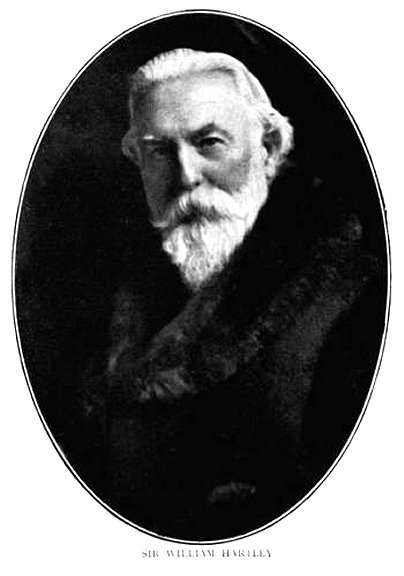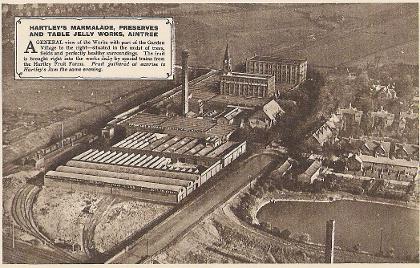History


Sir William Pickles Hartley - 1846 - 1922
Founder of Hartley's Jam
Born in Colne, Lancashire, Sir William Pickles Hartley is probably best remembered as the founder of the Hartleys jam empire. The Hartley family hailed from Yorkshire, where Sir William's grandfather had been borrn, and had probably moved to live near Pendle sometime after that. Here they began as fairly modest local grocers in the district. Hartley married Martha Horsfield, and as the business grew the family moved into the wholesale trade, and a chance event in 1871 started the Hartley ball rolling, (so to speak) as, so it is said, a supplier failed to deliver a batch of jam and William was forced to make his own. His jam, marmalade and jelly sold so well that he continued to make it. Hartley began to develop his business by producing his own fruit and packaging it in his own distinctive earthenware pots.
In 1880 he moved his family to Southport, where he emerged as an influential local benefactor and entrepreneur, as well being a regular active member of the local Methodist Church, as were all the members of the Hartley family. He sired eight daugters and a son, and one of his daughters, Christiana, became Southport's first woman Mayor in 1921. In 1885 Hartley moved the business to Aintree in Liverpool, where he built Hartley Village for his workers. Throughout his life, he donated money for religious or philanthropic causes in Colne, Liverpool and in London. Many buildings in Colne, built in 1911 still stand today and are known locally as Hartley homes. In 1902 Hartley opened a jam factory in Bermondsey, south-east London and employed over 2,000 people. By 1908 he had been knighted by King Edward VII for his many charitable acts and funding to Sunday Schools and for the establishment of hospitals. The village of Trawden, near Colne, still boasts what is thought to be a rare monument to jam manufacturing in the area. An industrial jam pan, found in a farmers field in the village of Wycoller nearby was brought back to Trawden where it remains today.
Past Times
William Pickles Hartley founded his Jam-making" empire in 1871. Hartley began to develop his business by producing his own fruit and packing it in his own distinctive earthenware 'melling pots'. In 1884 the jam-making business was incorporated as William Hartley & Son Limited. Hartley moved the business to Aintree Liverpool in 1886, where he built 'Hartley Garden Village' to the right of the factory for his workers. (Pictures can be seen in the gallery)

The village started with 40 houses and later expanded. The village was self contained, in the square behind the houses were gardens, tennis courts and bowling greens for the resident workers to enjoy. Most of the roads in the village were tree-lined avenues with names of the ingredients used in jam-making such as Sugar Street, Spice lane and Cherry Avenue. After the jam production moved to London the factory and land (including the garden square) were sold off. The houses were ether sold to existing residents or to private purchasers.

Where we are today
As can be readily seen, despite the tidy houses, there are major environmental problems. Derilict or under-used buildings, incompatible uses, vacant lots. New development has not helped retain the integrity of the village and many of its architecural assets are in danger of being lost. Sadly the trees lining the avenues, the gardens, tennis courts and bowling greens have long since gone and the village is a shadow of its former glory. However the community spirit is still very much alive and the houses still retain much of their charm and character.
Hartley's Village is still a great place to live and is part of our citys heritage and the slow decline must be stopped. The residents of Hartley's Village have formed "The Hartley's Village Heritage council" This residents group has a set of long term aims. To reverse the decline of our village, to re-develop and restore the village and surrounding area to create a interactive environment for the whole of the local community to use and enjoy. This will be a long and difficult process and many obstacles stand in our way to achieving or long term plan.
Vision for the future
The vision for the renaissance of the village, based upon William Hartley's philanthropic vision, is just as bold, but contains nothing that any healthy community should not provide. A rich mix of housing, workspace, leisure, food, arts and craft, based on the bedrock of health, wellbeing, open space and the areas rich built with social heritage.
Translate This Page